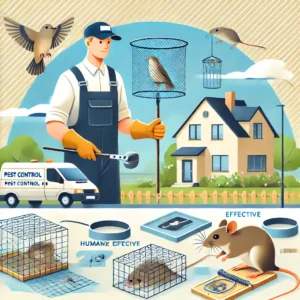
Home pest control services Langley offer effective solutions to eliminate unwanted pests that can jeopardize the comfort and safety of a household. Understanding the specific pest problems of the area allows professionals to tailor their approaches, ensuring a comprehensive strategy for pest management. With various methods available, homeowners can choose services that meet their specific needs, whether for prevention or treatment.
Many residents in Langley may wonder about the benefits of hiring professionals rather than attempting DIY pest control. Engaging expert services not only enhances the efficiency of elimination but also provides long-term protection against future infestations. Trained technicians utilize specialized equipment and eco-friendly products, ensuring a safer living environment for families and pets.
Moreover, pest control companies often offer regular maintenance plans, allowing homeowners to stay proactive in their efforts. By investing in these services, they can save time, reduce stress, and ultimately protect their property from the costly damages that pests may cause.
Assessing Your Pest Control Needs
Identifying pest control needs requires a careful assessment of various factors. Understanding common pests, evaluating the severity of infestations, and recognizing potential health risks are essential to formulating an effective pest management plan.
Identifying Common Pests in Langley
Residents in Langley often encounter a variety of pests. Common insects include:
- Ants: Particularly carpenter and pavement ants.
- Cockroaches: Can thrive in damp environments.
- Termites: Known for causing significant structural damage.
- Rodents: Mice and rats frequently invade homes.
In addition to insects, homeowners may notice wasps, spiders, and bedbugs. Identifying which pests are present can help determine the right control measures. Regular inspections and keeping an eye out for signs of infestation, like droppings or damaged wood, are necessary for early detection.
Evaluating Infestation Severity
The severity of an infestation is crucial for deciding on the appropriate treatment. Factors to consider include:
- Extent of Damage: Look for chewing marks, nesting sites, or frass (termite droppings).
- Population Size: Spotting multiple insects or droppings indicates a larger problem.
- Duration: A long-term issue is often more difficult to manage than a recent one.
Conducting a thorough inspection and documenting findings can provide insight into whether professional assistance is needed. This helps prioritize immediate action or ongoing monitoring.
Understanding Health Risks
Different pests pose varying levels of health risks. For example:
- Rodents can carry diseases like hantavirus.
- Cockroaches may trigger asthma and allergic reactions.
- Ticks can transmit Lyme disease.
Awareness of these risks is vital for families, especially those with children or pets. Taking note of where pests are found can guide efforts in prevention and mitigation. Homeowners should seek advice from pest control professionals to understand the specific risks associated with their pest problems.
Customized Pest Control Solutions
Tailored pest control services address specific needs, focusing on environmentally friendly practices, distinguishing residential and commercial requirements, and implementing preventative measures. These customized solutions enhance effectiveness and satisfaction.
Environmentally Friendly Options
Many homeowners and businesses are concerned about the impact of pest control on the environment. Companies now offer eco-friendly solutions that utilize organic and biodegradable products.
These alternatives are effective against pests while minimizing harm to beneficial insects and surrounding ecosystems.
Important environmentally friendly techniques include:
- Integrated Pest Management (IPM): A holistic approach combining multiple methods to control pests sustainably.
- Natural Exclusions: Use of physical barriers, such as screens and traps, that reduce reliance on chemicals.
- Biological Control: Introducing natural predators of pests, reducing chemical needs.
Selecting such options ensures safety for families, pets, and the environment.
Residential Vs. Commercial Services
Pest control needs vary significantly between residential and commercial properties.
Residential services focus on common household pests like ants, roaches, and rodents. Treatment plans often start with inspections to identify infestations followed by tailored methods to eliminate them.
Commercial services, on the other hand, cater to businesses like restaurants and warehouses, often requiring more stringent regulations.
Key considerations include:
- Customized Schedules: Commercial properties may need frequent visits to maintain pest-free conditions.
- Specialized Treatments: Strategies for handling pests in sensitive environments, such as food service areas.
- Documentation and Compliance: Businesses often require detailed reports for compliance with health regulations.
Tailoring the approach ensures effectiveness based on property type.
Preventative Measures and Maintenance
Preventative measures play a crucial role in long-term pest control. Customized plans often include routine inspections and maintenance to prevent infestations before they start.
Several strategies are key:
- Regular Inspections: Scheduled checks identify potential entry points and signs of pests early.
- Sealing Entry Points: Closing gaps in doors, windows, and walls reduces access for pests.
- Education: Providing property owners with information on maintaining cleanliness and addressing conditions that attract pests.
By emphasizing preventative maintenance, property owners can save on future pest control costs and ensure a comfortable living or working environment.
Copper Companies Stock: Analyzing Investment Opportunities in 2025
Investors are increasingly interested in copper companies as demand for the metal rises, d…